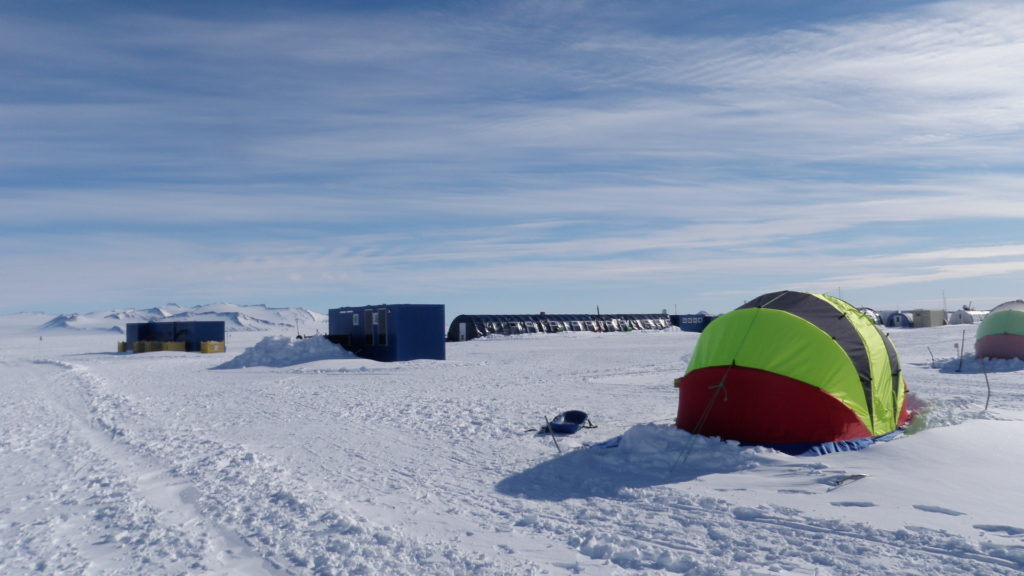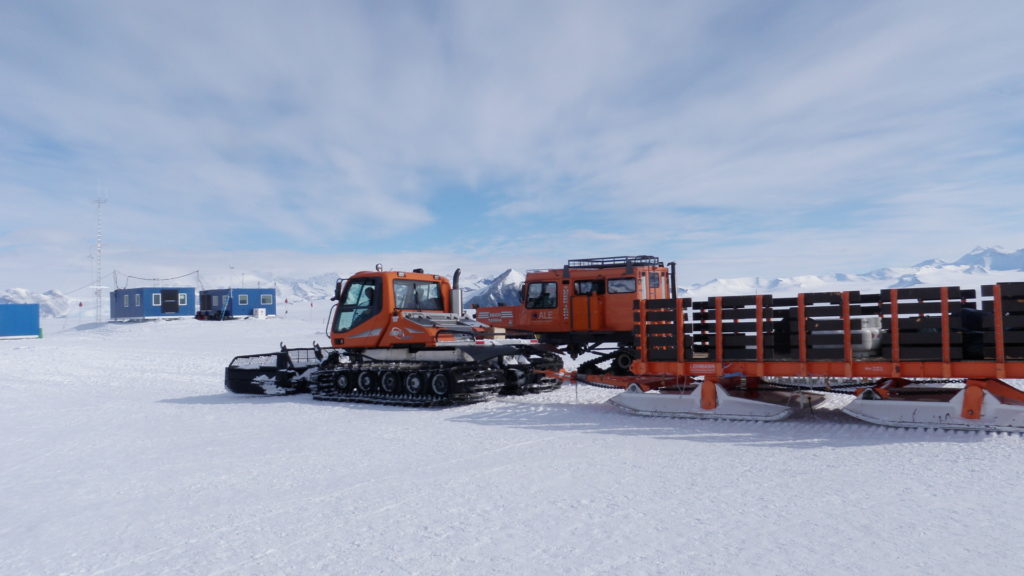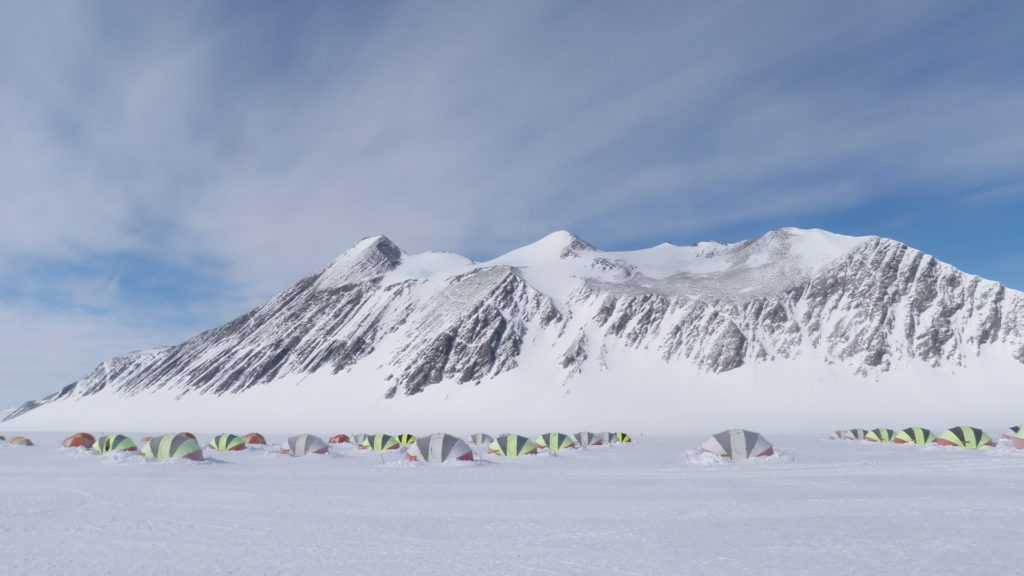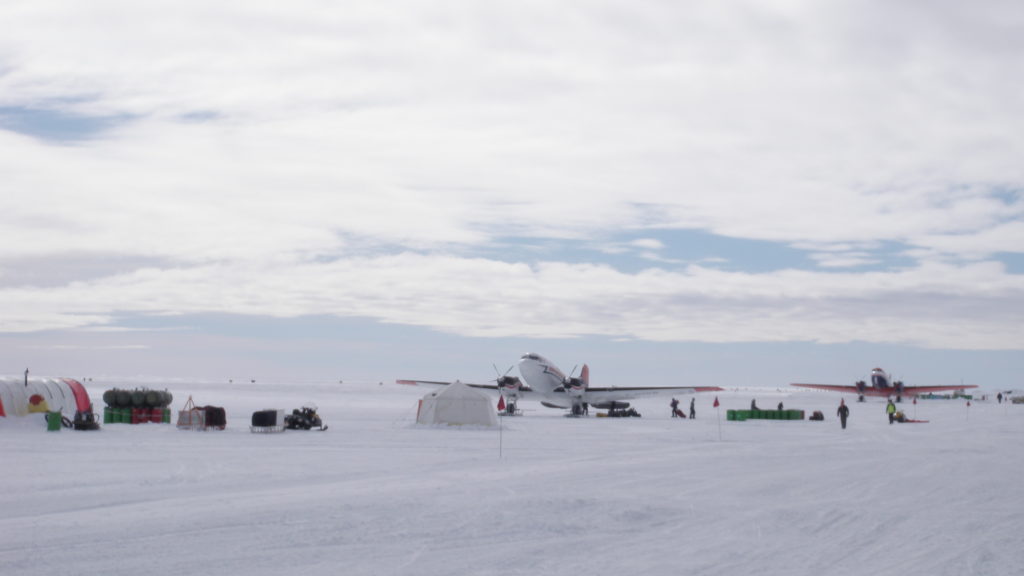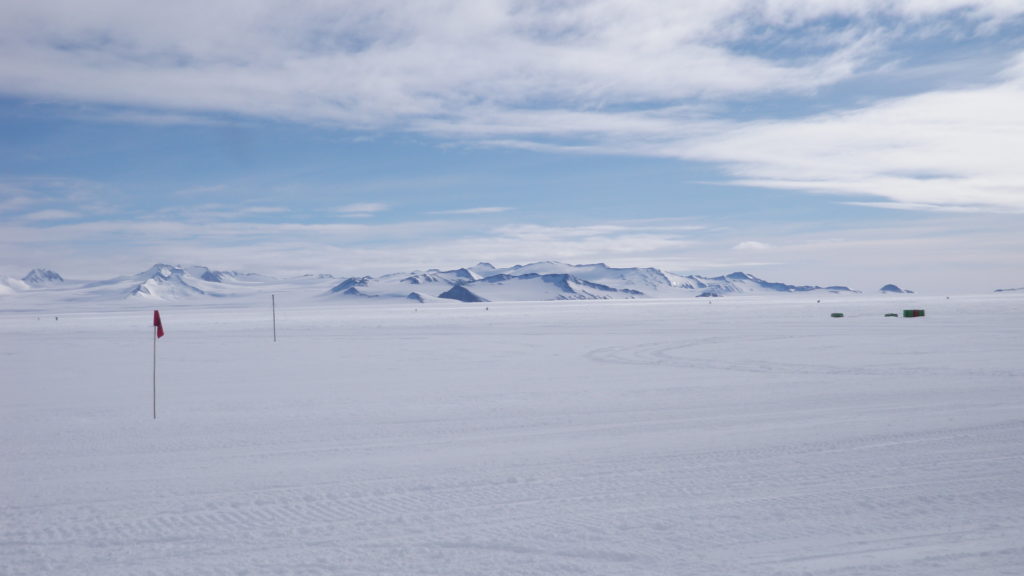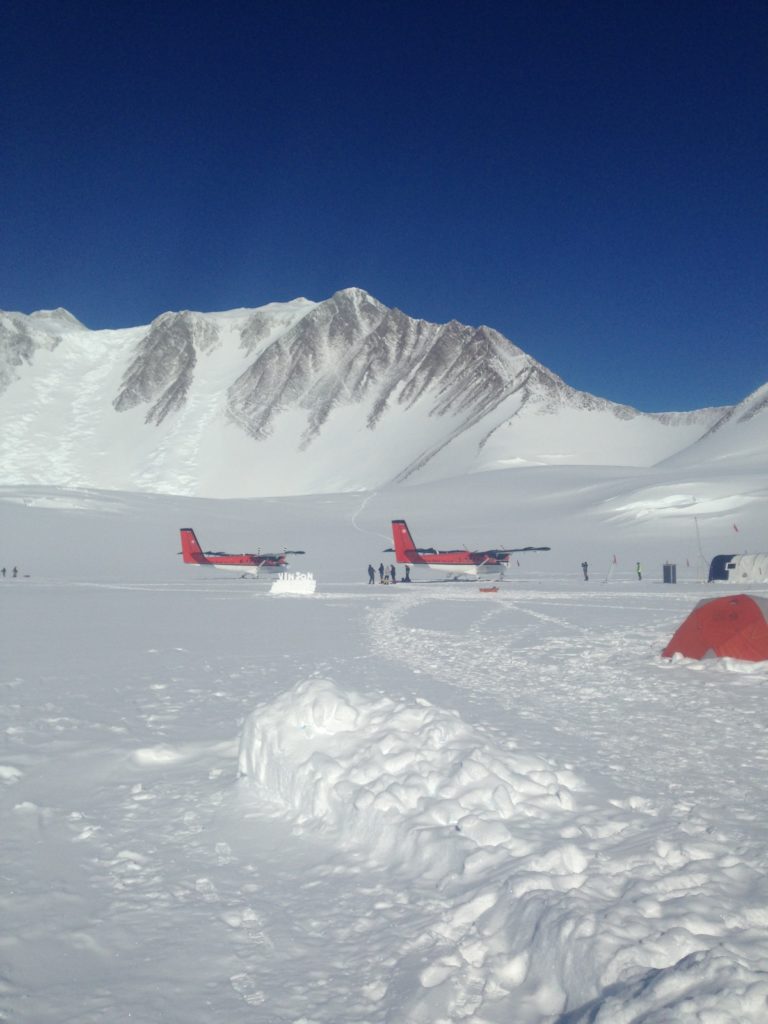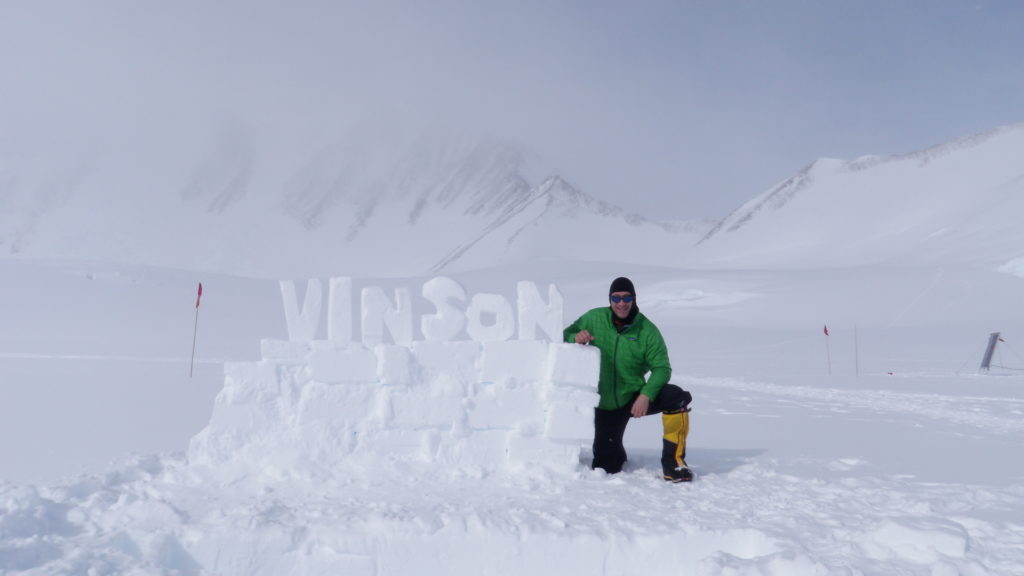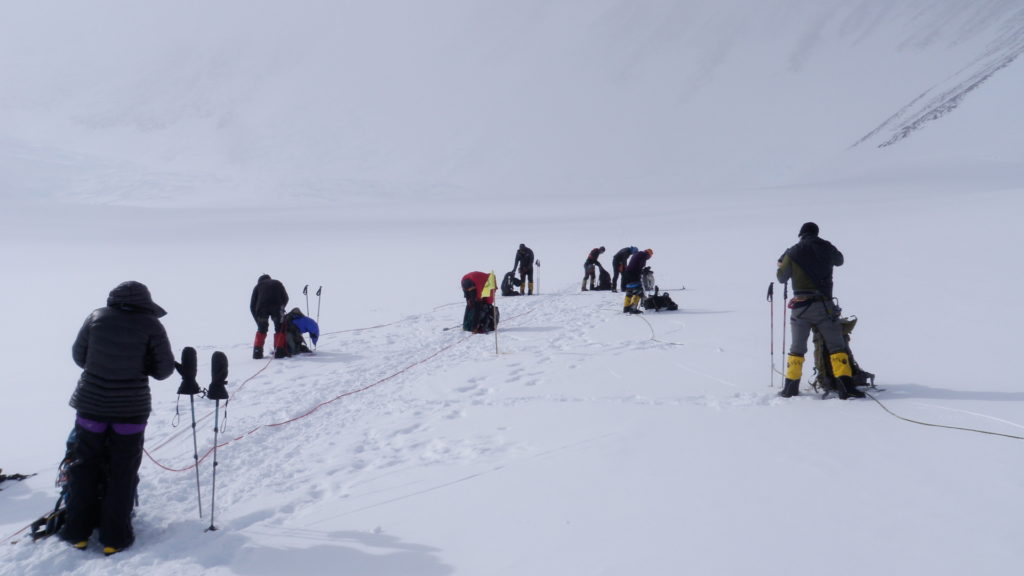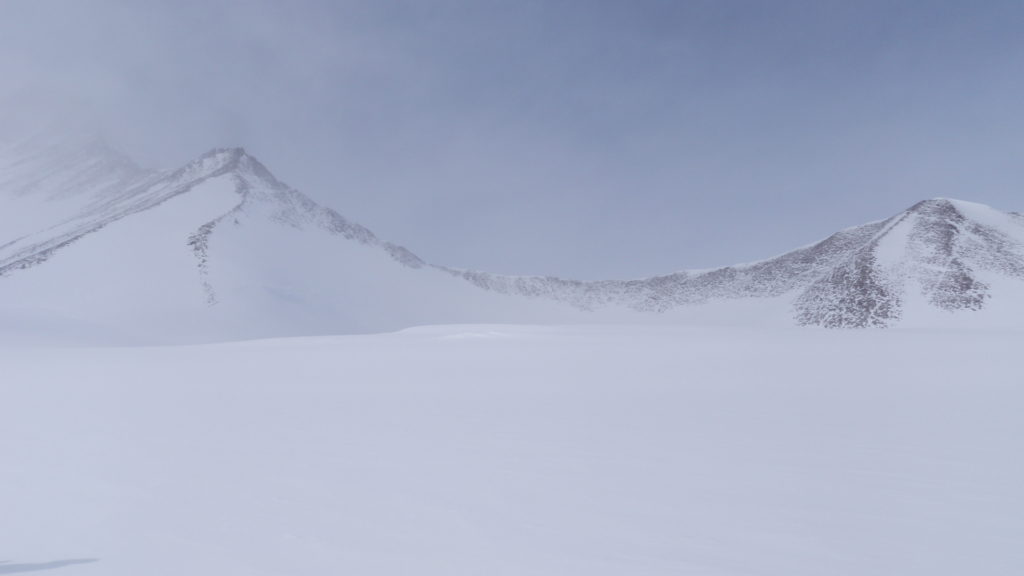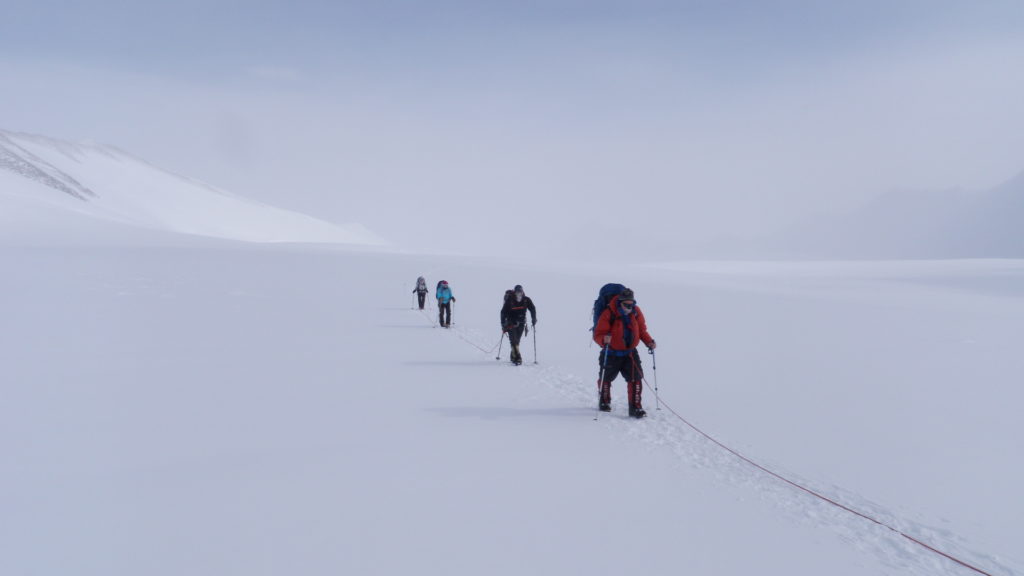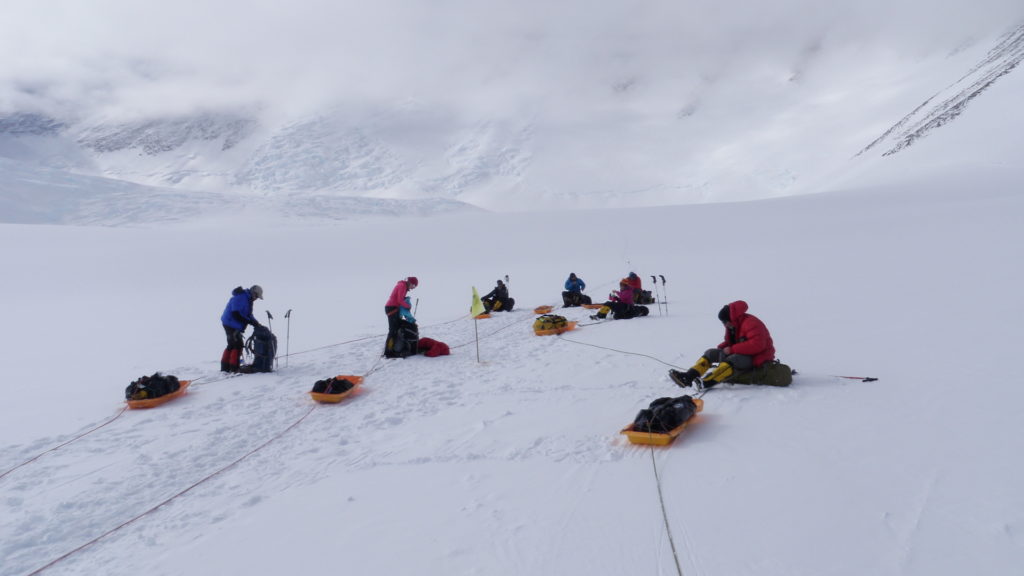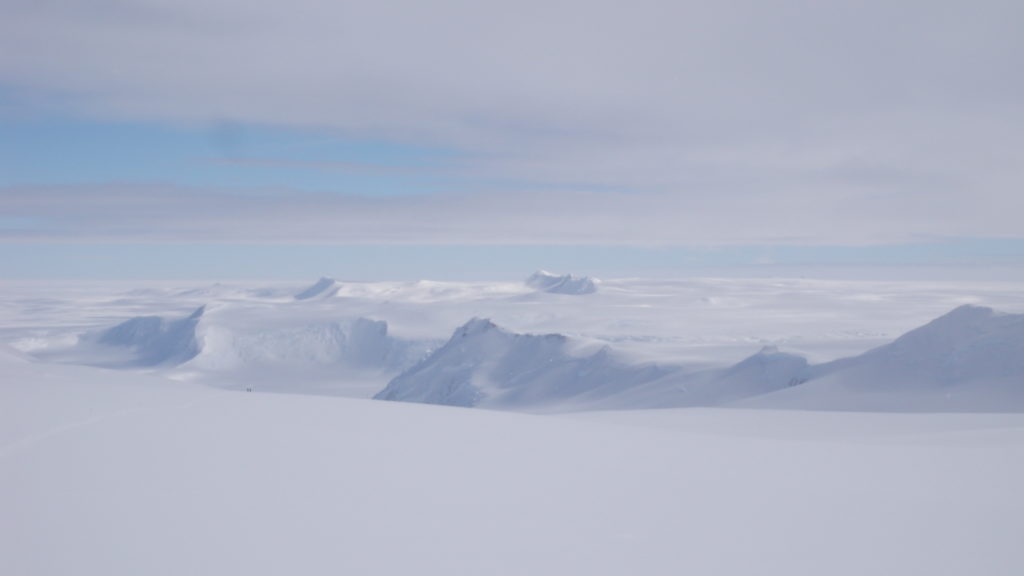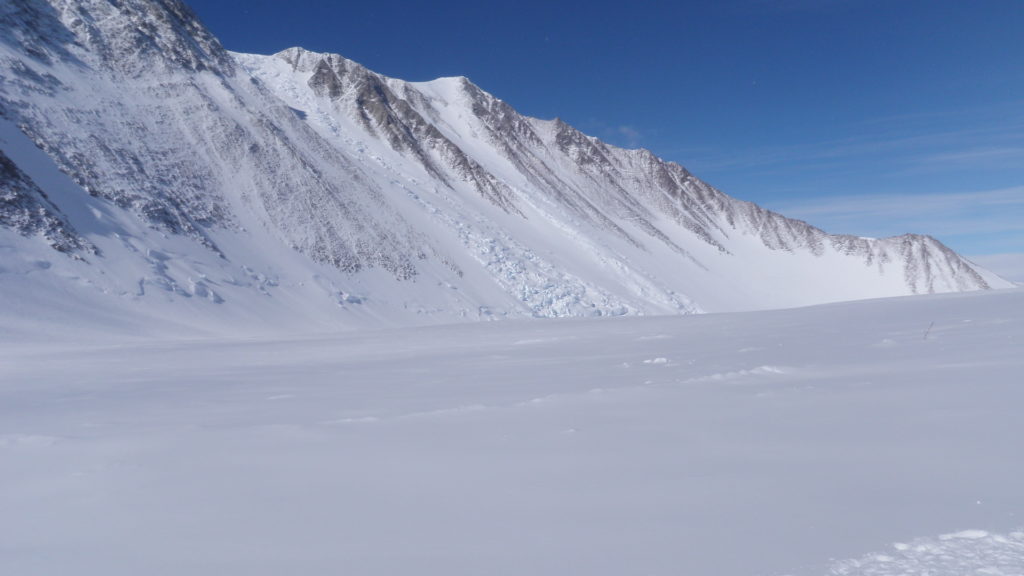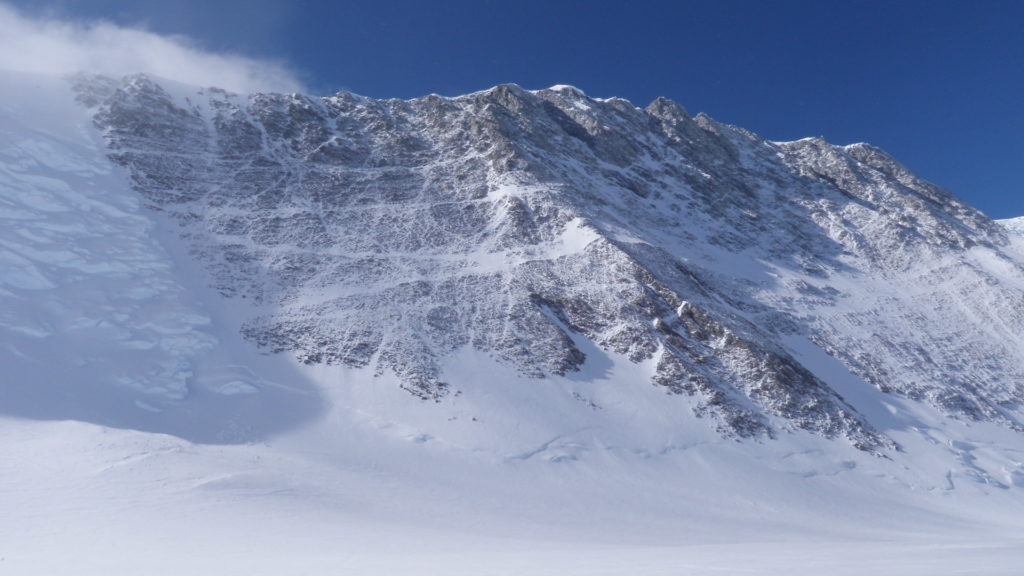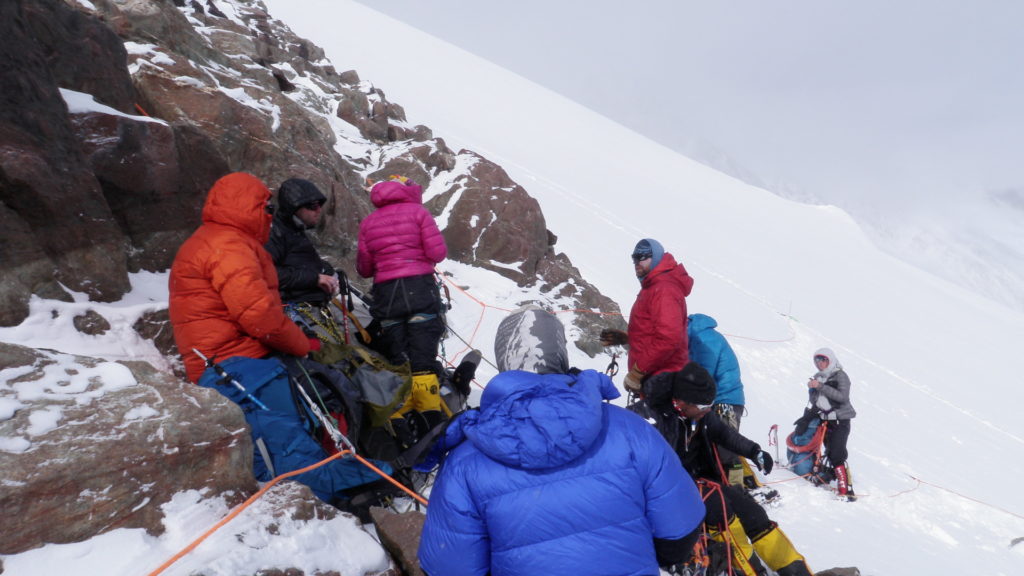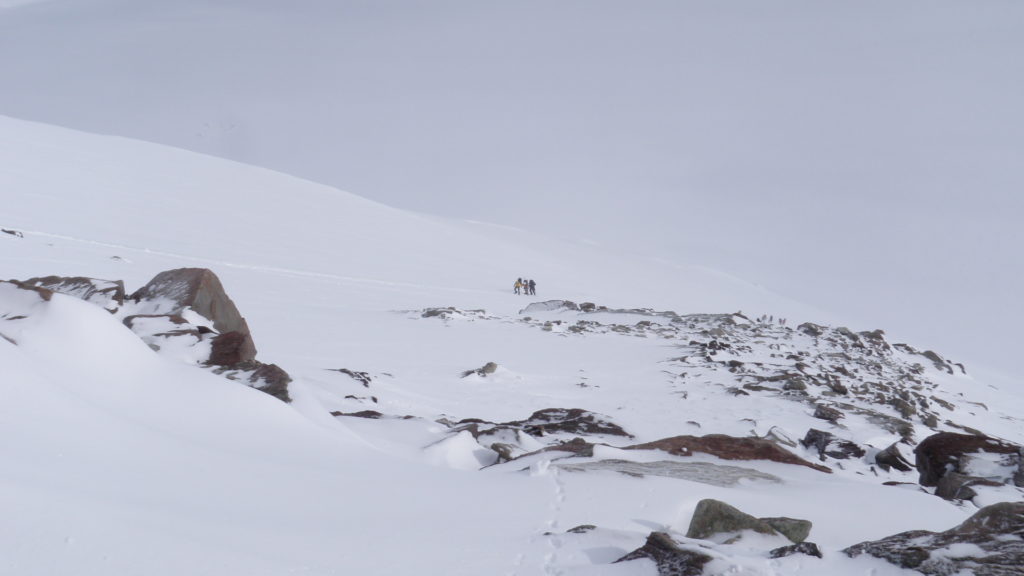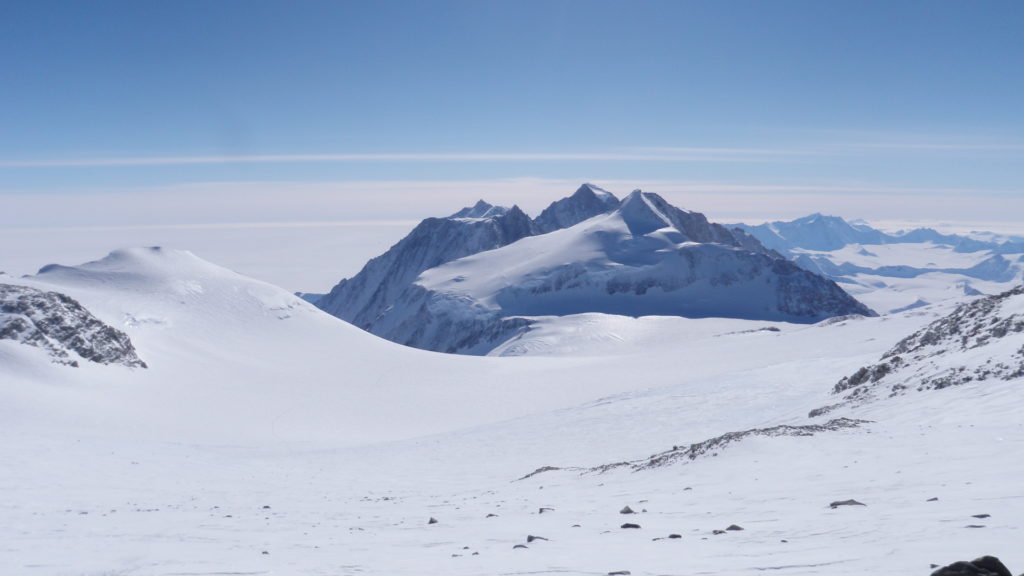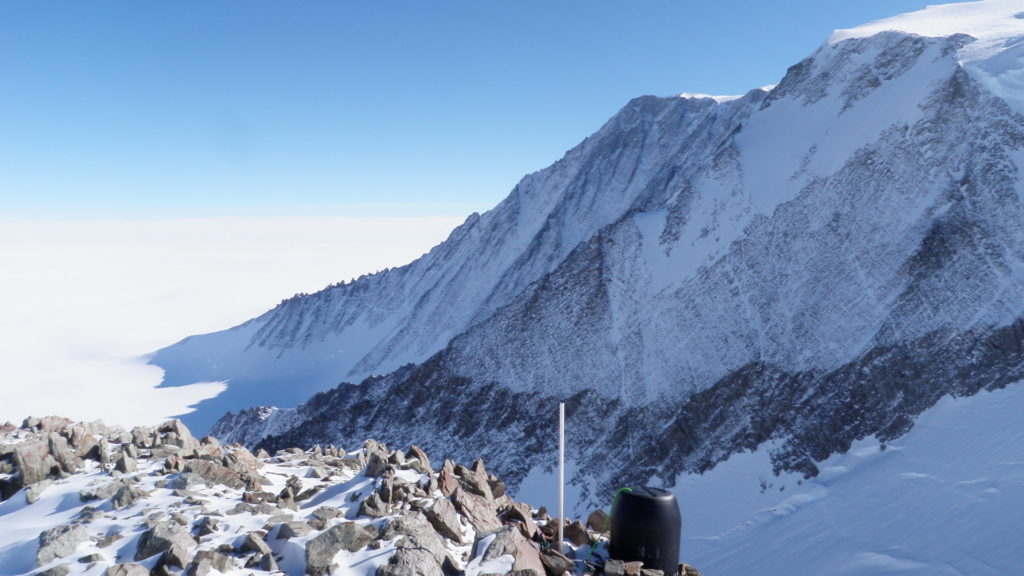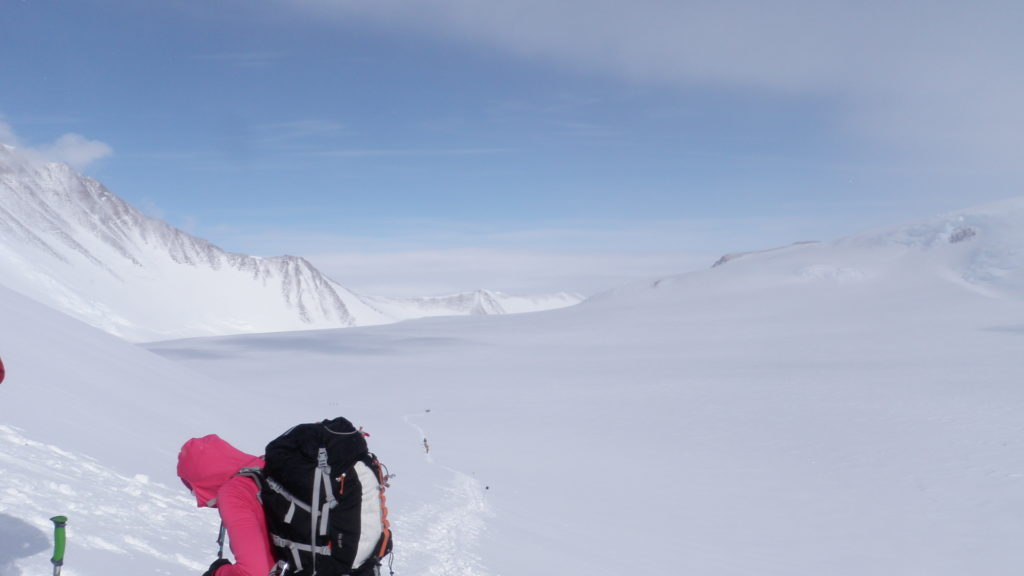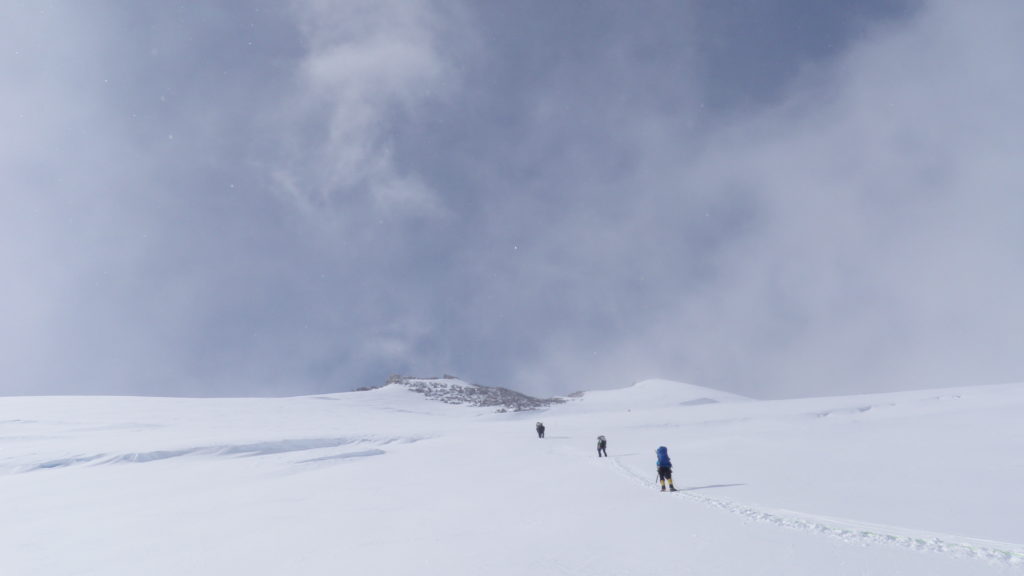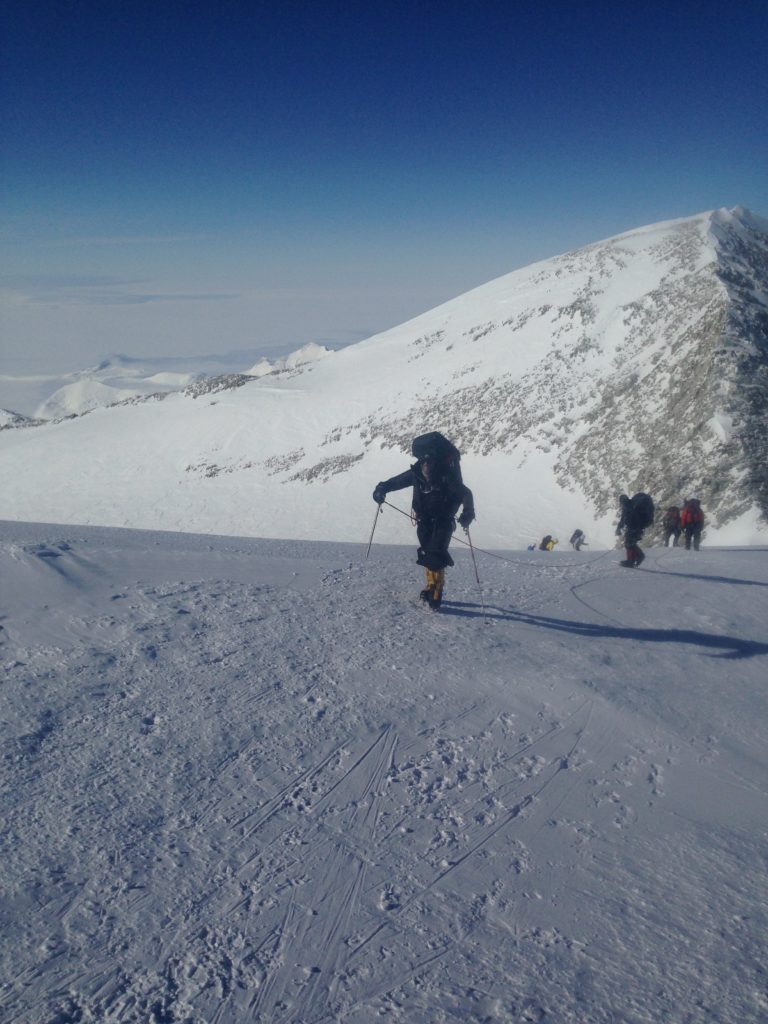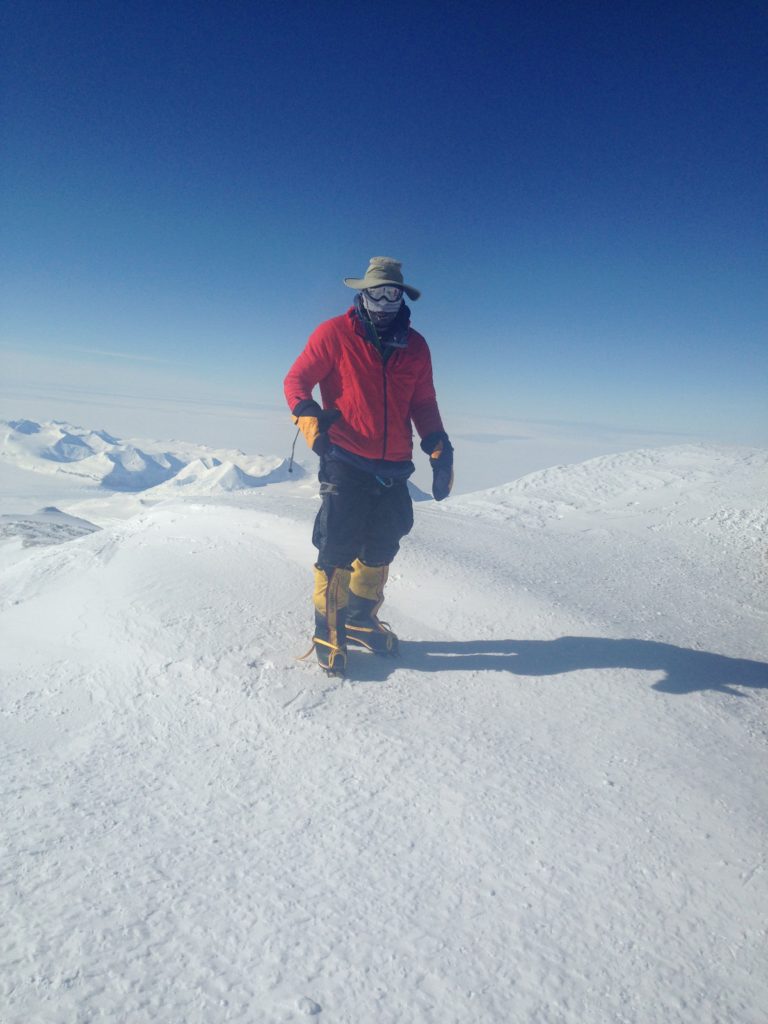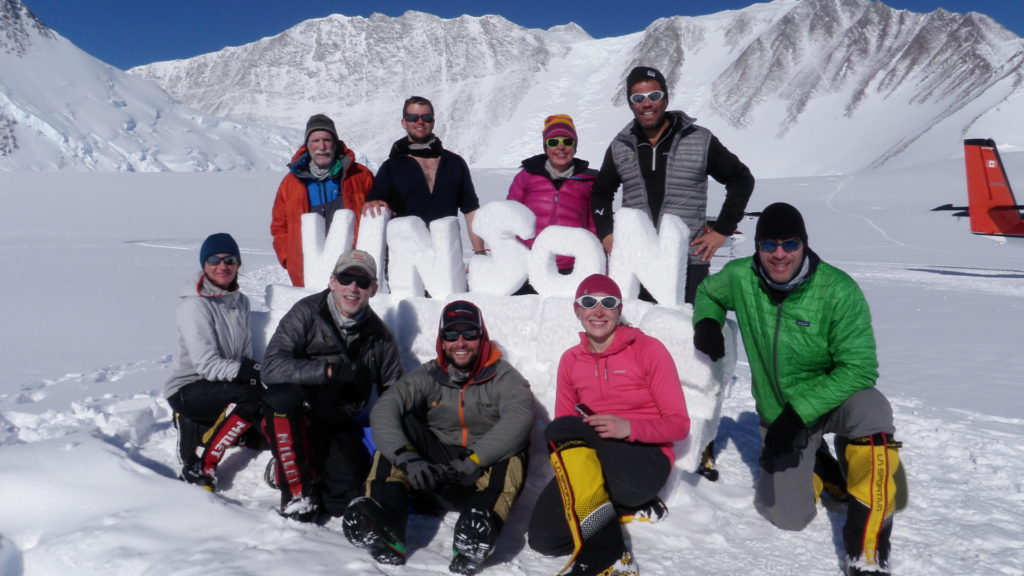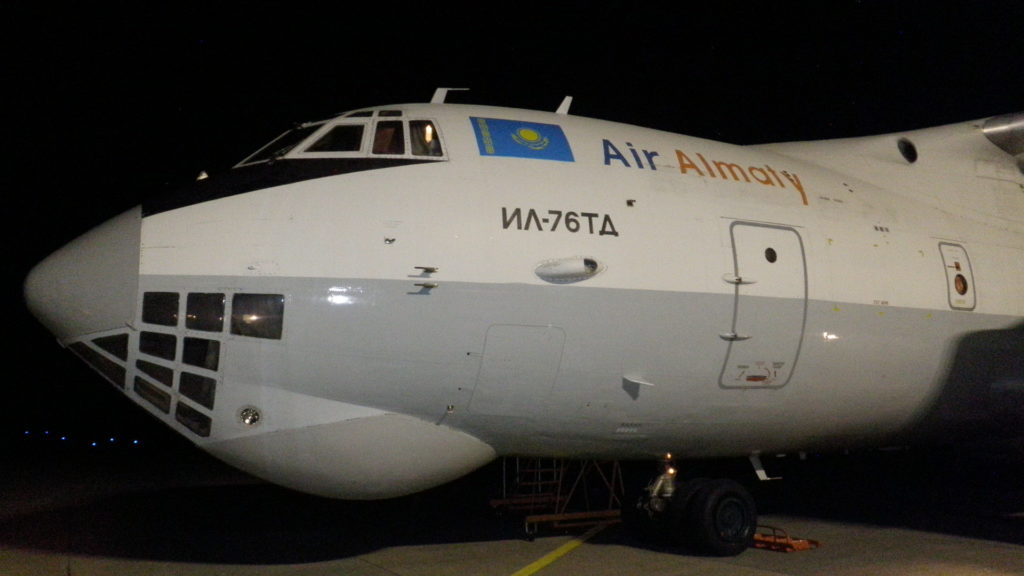Climbers are a very lucky bunch of people – almost every part of the world has mountains, so they can practice their craft anywhere. All of us have daydreamed about climbing in exotic locales, and a few of us have traveled to some of these remote spots. The Alps, the Andes, the Himalayas, the Rockies are all big draws for those who can manage to get there, but there is one place that surely beats them all, a place so outrageously hard to reach that it remains the stuff of television documentaries and coffee-table books. Of course, I’m talking about Antarctica.
The highest spot on the entire continent is Mount Vinson. The mountain is the highest point in a large massif covering several square miles, which is in turn part of the Sentinel Range. It was first discovered back in 1958, and its elevation at that time was estimated to be 16,864 feet. Several years passed before a group composed of members of the American Alpine Club and the National Geographic Society managed to organize an expedition. Finally, in December of 1966, the US Navy transported the team and its supplies from Christchurch, New Zealand to the U.S. Base at McMurdo Sound, Antarctica, and from there in a ski-equipped C-130 Hercules to the Sentinel Range. Of the 11 members of the expedition, 4 of them reached the summit on December 18, 4 more on December 19 and the last 3 on December 20.
Over the years, more accurate surveys of Vinson have placed its elevation at around 16,067 feet, although today you can still see figures from 16,050′ to 16,077′. In any case, it is certainly the paterfamilias of everything else on the 5-million-square-mile continent, and is also the 8th-most-prominent peak in the world. It sits at 78 degrees 35 minutes S latitude, about 660 miles from the South Pole.
As climbers turned their attention to Vinson, a need arose for reliable transportation to the area. The logistics of flying down there and getting back safely were not simple. In the early 1980s, the first flights were in a DC3 with a third engine. After that, a DC4 was used, then a DC6. The next step was a C-130 from South Africa, and then a Russian military cargo jet called the Ilyushin IL-76. Nowadays, most flights originate from Punta Arenas in Chilean Tierra del Fuego, being the closest practical place from which to start. And that brings me to the main focus of this story.
John Klein, a friend from Tucson with whom I have climbed several times, had set his sights on climbing Vinson. To make this once-in-a-lifetime dream a reality, he chose a company called International Mountain Guides, based in Washington state in the USA. He and the other members of his team, led by IMG senior guide Mike Hamill, met in Punta Arenas, and on Thursday, November 26, 2015 they took off in a Boeing 757. This flight was operated by Loftleider Icelandic Airlines. The jet was configured with 62 business-class seats for the 4-hour, 1,900-mile flight. They headed south and landed on the Union Glacier on a 10,000-foot runway cleared on the blue ice.
A company called Antarctic Logistics operates the camp at Union Glacier, but only during the November to January season. It is quite a setup, able to accommodate 70 people in 2-person tents. The camp has a dining tent, showers, toilets, a library and offers the use of satellite phones. They even have fat-tire bikes which can be used to ride around on the ice. Their staff speaks 15 languages. The camp is a base of operations for not only climbers but also teams of scientists, and is used to connect to the South Pole itself. John’s team celebrated Thanksgiving at their tent camp near the runway at around 2,500′ elevation. Here are photos taken around camp.
Friday the 27th of November was spent at camp, a sort of rest day, but still working hard. Since this was to be the first IMG climb of Vinson for the season, they retrieved all of the equipment that the company left on the ice between seasons, then sorted it and checked it out. The weather was excellent, clear and sunny, with the temperature about -20 degrees F.
On Saturday the 28th, the entire party flew in a de Havilland Twin Otter equipped with skis to Base Camp, a 45-minute flight which put them at around 7,000′ elevation. Several companies offer guided climbs to Vinson, and they regulate themselves very well – so as not to despoil the pristine environment, they even have agreed-upon spots to use as a toilet. When John’s group was at Base Camp, there were about 50 people there with various companies that guided climbers on Vinson.
They had to set up camp when they arrived, which kept them busy the rest of the day – that included doing such things as setting up their own tents. The guides with IMG did all the cooking, though. They also prepared loads for a carry to Camp One. Sunday the 29th saw them stuck in Base Camp, a weather day.
Monday the 30th, the weather improved. The team roped up and spent 6 hours pulling sleds loaded with gear to the site of Camp One at 10,000 feet, where they dropped the loads they had carried. They then headed back down to Base Camp. Here are pictures taken between Base Camp and Camp One.
Tuesday, December 1st was another rest day at Base Camp
Wednesday, December 2nd saw the team move up to Camp One. The loaded sleds they had pulled 2 days earlier only contained half of the gear they needed, so on the 2nd they carried the rest on their backs.
In the above photo, you are looking at 4,000 vertical feet of rock and ice.
Thursday, December 3rd – in somewhat improving weather, the team made a carry. They only made it part of the way to Camp Two. They cached their loads, then headed back down to Camp One for the night. The decision to only go part of the way was made by the guides, whose job it was to assess the overall progress and condition of the team. The forecast promised improving weather. The team was feeling strong, capable and was raring to go. If the weather would hold, they’d head up the next day. They were in a good position, either way.
Friday, December 4th – the team made a big push up to Camp Two, their high camp. There were a couple of thousand feet of fixed rope between Camp One and Camp 2. All of the fixed rope had been placed earlier in the season by guides who worked for Antarctic Logistics, the company who ran the Union Glacier camp. These guides also patrolled the climbing route and even had their own tent at Camp Two. They served as a back-up for all of the climbers in case of emergency, and kept in touch with the folks back at Union Glacier for updated weather reports. At Camp Two, the temperature was -40 degrees F. and the weather was calm.
Saturday, December 5th – in the Austral summer, especially this far south, there are 24 hours of daylight. John’s team got an alpine start, up and moving by 4:00 AM. They were roped up at all times and wore crampons; their route was wanded all the way. They traveled on snow-covered glacier the whole way, with the only crevasses safely off to the sides of their route. There was one minor rock band below the summit which they negotiated in crampons. Everyone in John’s group successfully made it to the summit. It took them about 8 hours to get there, arriving at mid-day.
Here is a view taken en route from their High Camp to the summit.
Once on the summit, they took photos, hugged, shed a few tears, but didn’t stay there more than 15 or 20 minutes. The reason for the short stay was the extreme cold, about minus 40 degrees, and the fact that in such conditions safety is paramount – the sooner they started back down, the sooner they’d reach their high camp. Conditions could change quickly, and being caught in a storm under those conditions could prove fatal.
Once back down to their high camp, they spent another night. With an early start the next morning, they made it all the way back down to Base Camp, picking up a bit of group gear at Camp One. At Base, they packed up everything, loaded it into the waiting Otter and flew directly back to the Union Glacier Camp. Here’s a picture of John’s team back at Base Camp. Their guide, Josh McDowell, is in the center of the front row. Our man John is in the green, one very happy climber.
Remember how they had flown from Punta Arenas to Union Glacier on that Icelandic flight? That was just an experiment, and that plane wasn’t used again. Instead, back at Union Glacier they found the Ilyushin IL-76 waiting. It had just arrived, and John’s team had a scant 30 minutes to grab their gear and get on board. It then took off and flew them back to Punta Arenas. Talk about good timing – yesterday they had been atop Vinson, and the very next day were all the way back in Chile! Here is their plane on the tarmac in Punta Arenas.
Not all teams were as lucky as John’s. Some don’t make the summit due to extended periods of bad weather on the mountain. Companies like IMG, the one John used, allow about a 3-week window for a Vinson climb. Once they meet in Punta Arenas, bad weather in Antarctica could delay their flight south for days on end, and if too many days pass without being able to leave Chile, the company will simply cancel the entire trip. If there aren’t enough days left to reasonably allow for the climb itself, there’s no point in even taking off.
John described his Antarctic experience as nothing short of surreal – the intense cold, the white expanse from horizon to horizon with only the tops of peaks showing here and there. It’s a rare privilege to make it to the summit of Vinson – more climbers summit Everest than Vinson each year. John says it was one of the highlights of his life.

